Europea: Ethnomusicologies and Modernities
Series Editors: Philip V. Bohlman and Martin Stokes
1. Celtic Modern: Music at the Global Fringe , edited by Martin Stokes and Philip V. Bohlman, 2003.
2. Albanian Urban Lyric Song in the 1930s , by Eno Koo, 2004.
3. The Mediterranean in Music: Critical Perspectives, Common Concerns, Cultural Differences , edited by David Cooper and Kevin Dawe, 2005.
4. On a Rock in the Middle of the Ocean: Songs and Singers in Tory Island , Ireland , by Lillis Laoire, 2005.
5. Transported by Song: Corsican Voices from Oral Tradition to World Stage , by Caroline Bithell, 2007.
6. Balkan Popular Culture and the Ottoman Ecumene: Music, Image, and Regional Political Discourse , edited by Donna A. Buchanan, 2007.
7. Music and Musicians in Crete: Performance and Ethnography in a Mediterranean Island Society , by Kevin Dawe, 2007.
8. The New (Ethno)musicologies , edited by Henry Stobart, 2008.
9. Balkan Refrain: Form and Tradition in European Folk Song , by Dimitrije O. Golemovic, 2010.
10. Music and Displacement: Diasporas, Mobilities, and Dislocations in Europe and Beyond , edited by Erik Levi and Florian Scheding, 2010.
11. Balkan Epic: Song, History, Modernity , edited by Philip V. Bohlman and Nada Petkovic, 2011.
12. What Makes Music European , by Marcello Sorce Keller, 2012.
13. The Past Is Always Present: The Revival of the Byzantine Musical Tradition at Mount Athos , by Tore Tvarn Lind, 2012.
Europea: Ethnomusicologies and Modernities
Series Editors: Philip V. Bohlman and Martin Stokes
The new millennium challenges ethnomusicologists, dedicated to studying the music of the world, to examine anew the Western musics they have treated as traditional, and to forge new approaches to world musics that are often overlooked because of their deceptive familiarity. As the modern discipline of ethnomusicology expanded during the second half of the 20th century, influenced significantly by ethnographic methods in the social sciences, ethnomusicologys field increasingly shifted to the exoticized Other. The comparative methodologies previously generated by Europeanist scholars to study and privilege Western musics were deliberately discarded. Europe as a cultural area was banished to historical musicology, and European vernacular musics became the spoils left to folk-music and, later, popular-music studies.
Europea challenges ethnomusicology to return to Europe and to encounter its disciplinary past afresh, and the present is a timely moment to do so. European unity nervously but insistently asserts itself through the political and cultural agendas of the European Union, causing Europeans to reflect on a bitterly and violently fragmented past and its ongoing repercussions in the present, and to confront new challenges and opportunities for integration. There is also an intellectual moment to be seized as Europeans reformulate the history of the present, an opportunity to move beyond the fragmentation and atomism the later 20th century has bequeathed and to enter into broader social, cultural, and political relationships.
Europea is not simply a reflection of and on the current state of research. Rather, the volumes in this series move in new directions and experiment with diverse approaches. The series establishes a forum that can engage scholars, musicians, and other interlocutors in debates and discussions crucial to understanding the present historical juncture. This dialogue, grounded in ethnomusicologys interdisciplinarity, will be animated by reflexive attention to the specific social configurations of knowledge of and scholarship on the musics of Europe. Such knowledge and its circulation as ethnomusicological scholarship are by no means dependent on professional academics, but rather are conditioned, as elsewhere, by complex interactions between universities, museums, amateur organizations, state agencies, and markets. Both the broader view to which ethnomusicology aspires and the critical edge necessary to understanding the present moment are served by broadening the base on which academic discussion proceeds.
Europe will emerge from the volumes as a space for critical dialogue, embracing competing and often antagonistic voices from across the continent, across the Atlantic, across the Mediterranean and the Black Seas, and across a world altered ineluctably by European colonialism and globalization. The diverse subjects and interdisciplinary approaches in individual volumes capture something ofand, in a small way, become part ofthe jangling polyphony through which the New Europe has explosively taken musical shape in public discourse, in expressive culture, and, increasingly, in political form. In order to capture something of the turbulent dynamics of music performance, a critical framework is necessary, and this is what Europea: Ethnomusicologies and Modernities aims to provide, engaging the forces that inform and deform, contest and mediate the senses of identity, selfhood, belonging, and progress that shape European musical experience in Europe and across the world.
The Past Is Always Present
The Revival of the Byzantine Musical Tradition at Mount Athos
Tore Tvarn Lind
Europea: Ethnomusicologies and Modernities Series, No. 13

the scarecrow press, INC.
Lanham Toronto Plymouth, UK
2012
Published by Scarecrow Press, Inc.
A wholly owned subsidiary of The Rowman & Littlefield Publishing Group, Inc.
4501 Forbes Boulevard, Suite 200, Lanham, Maryland 20706
http://www.scarecrowpress.com
Estover Road, Plymouth PL6 7PY, United Kingdom
Copyright 2012 by Tore Tvarn Lind
All rights reserved. No part of this book may be reproduced in any form or by any electronic or mechanical means, including information storage and retrieval systems, without written permission from the publisher, except by a reviewer who may quote passages in a review.
British Library Cataloguing in Publication Information Available
Library of Congress Cataloging-in-Publication Data
Lind, Tore Tvarn, 1969
The past is always present : the revival of the Byzantine musical tradition at Mount Athos / Tore Tvarn Lind.
p. cm. (Europea : ethnomusicologies and modernities ; no. 13)
Includes bibliographical references and index.
ISBN 978-0-8108-8147-1 (cloth : alk. paper) ISBN 978-0-8108-8148-8 (ebook)
1. Music, ByzantineHistory and criticism. 2. Byzantine chantsHistory and criticism. 3. Church musicOrthodox Eastern Church. 4. Athos (Greece)History. I. Title.
ML188.L56 2012
781.71900949565dc23 2011026340
 The paper used in this publication meets the minimum requirements of American National Standard for Information SciencesPermanence of Paper for Printed Library Materials, ANSI/NISO Z39.48-1992.
The paper used in this publication meets the minimum requirements of American National Standard for Information SciencesPermanence of Paper for Printed Library Materials, ANSI/NISO Z39.48-1992.
Printed in the United States of America
We are concerned with observing contemporary society through contemporary society. There is no metacrit because there are no external observers. Whenever we use communicationand how could it be otherwisewe are already operating within society.
Niklas Luhmann
Series Editors Foreword
T he Past Is Always Present describes music in a European place of pilgrimage. It does so in the idiom of pilgrimage, in a mode of inquiry and exchange fashioned in the very act of walking . In one of many striking encounters depicted in this book, our Danish ethnographer brings a gift to the Vatopaidian monks. It is a facsimile of one of the monasterys own 11th century manuscripts, edited by Enrica Follieri and Oliver Strunk, and published as part of the Monumenta Musicae Byzaninae series in Copenhagen in 1975. Our presenter is dripping with sweat. He has just trekked over a mountain ridge with the weighty volume, evidently brought with him all the way from home, along with greetings from the current head of the MMB , Christian Troelsgrd. He hands it to Father Maksimos, who gazes at it, momentarily, one imagines, lost for words. Eventually he murmurs, Oh my... Krie elison ... this is our manuscript!

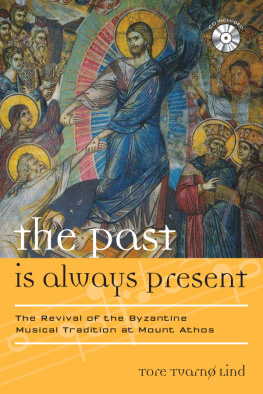
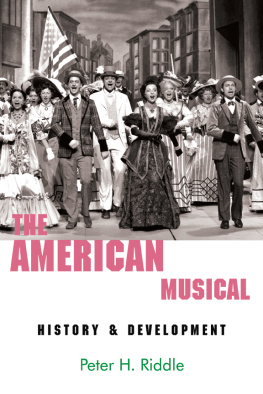

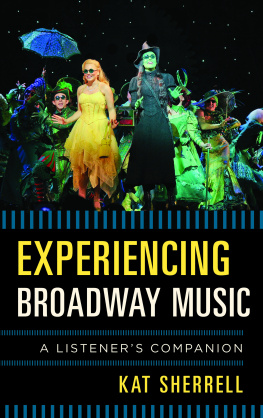
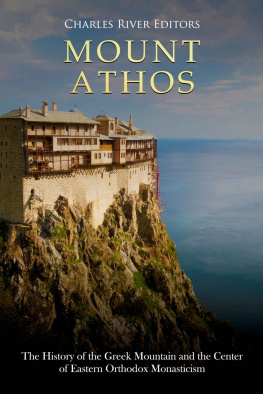
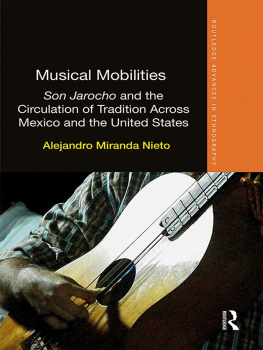
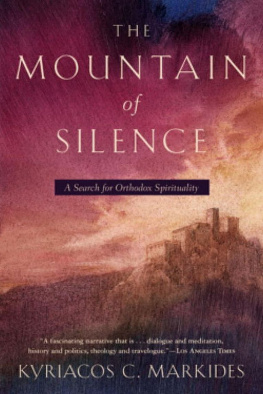
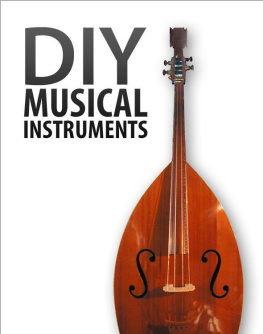

 The paper used in this publication meets the minimum requirements of American National Standard for Information SciencesPermanence of Paper for Printed Library Materials, ANSI/NISO Z39.48-1992.
The paper used in this publication meets the minimum requirements of American National Standard for Information SciencesPermanence of Paper for Printed Library Materials, ANSI/NISO Z39.48-1992.